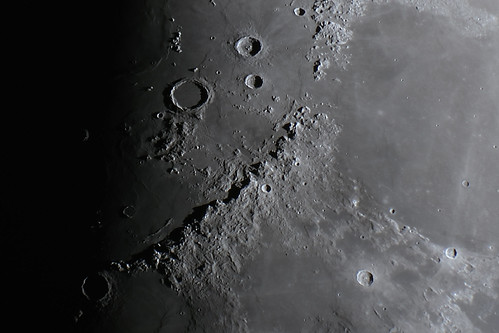May - August 2019
A combination of cloud and short nights (at my latitude, the sky never gets out of astronomical twilight for a few weeks either side of the solstice) meant that I largely missed out on the summer deep-sky objects this year. (Although there was compensation in the form of a striking display of noctilucent clouds.) For future reference, I think I’ll have to put in a really late session in April or early May if I’m to stand a realistic chance of exploring Ophiuchus and northern Scorpius.
On the few occasions I was able to get out in May the moon was dominating the sky, so I used the opportunity to get some images (like the one above), as well as putting a new Baader ND 0.9 filter to the test. The XT10 gathers a lot of light, so the filter certainly makes lunar observing a much more comfortable experience, particularly at lower magnifications. Purists may argue about the need for such a filter, but I’d rather not be swapping out Tele Vue eyepieces when I’m so dazzled by moonlight I can’t see what I’m doing. The Baader’s colour tone is pleasingly neutral and there were no reflections or other impairments that I could see.
10 August 2019, 20:50 BST
Jupiter is even lower in the sky this year (like Saturn, barely clearing the neighbour’s fence), but despite this I still managed to get some brief moments of good seeing – revealing the colour differences between the Great Red Spot, the darker equatorial belts, and the ongoing tan-coloured outbreak in the Equatorial Zone. All four Galilean moons were visible, with Europa gradually moving onto Jupiter’s disc as it began a transit. I was even able to use the 9mm Nagler + 2.5x Powermate combination to get a magnification of 333x, although as usual the seeing dropped off rapidly once Jupiter crossed the meridian.


No comments:
Post a Comment